As a guest on the Manager Mojo podcast with Steve Caldwell, Ken Larson shares his best business advice on the step-by-step process setting yourself up for success as a great leader.
Podcast : Leaders Must Get in Position to be in Position
Steve: [00:00:00] Hello, and welcome to The Manage Your Mojo Show; Steve Caldwell here and we’re so glad that you’re here. We use our mojo to really become greater leaders. Now let’s get started by listening to something good [music]
Steve: [00:00:37] If you really wanna improve as a leader, I’ve got a great deal for you. Simply go to mojouniversity.com, and sign up for our two-week trial. Take any of my courses; I promise you you’re going to get better. You’re going to learn. Go to mojo university dot com and sign up – totally for free and try us out for two weeks. [music interlude]
Steve: [00:01:21] Hello, and welcome everyone to The Manager Mojo Show. I’m thrilled to introduce my special guest, Mr. Ken Larson to you today. Now, Ken is a certified executive coach. He’s the owner of Champion Performance Systems, and works with leaders worldwide to help them improve and to reach performance levels that they never thought they could do. Ken’s trademarks are “energy,” “experience,” and enthusiasm, and I know we’re going to have a good time talking today. Our topic today is going to be “how to get in position – to be in position.” And I know that’s going to be a lot of fun; so welcome Ken, to the manager Mojo show.
Ken: [00:02:05] Hi Steve, and thank you very much.
Steve: [00:02:07] Well it’s glad – we’re glad to have you here. And before we get started on our topic today, why don’t you share with our listeners what fun thing you’ve been up to lately outside of work?
Ken: [00:02:18] (laughs) Well I gotta tell you, we’re in Calgary, Alberta Canada where this summer is pretty much over.
Ken: [00:02:23] In fact as I speak to you we just had a thundercloud come by; lots of thunder and lightning – but what I’ve been doing fun lately is I’ve been getting my dad’s hand-me-down.
Ken: [00:02:35] He gave me his 1968 Meteor Montcalm convertible about six years ago and I just got it back on the road this summer and got it going about a week or so ago after some carburetor problems. So I’ve only had it on the road for a week at the tail of the summer. So now it’s about to go into storage again so I’m trying to get in that thing every minute that I can. In fact, if I put the top down and drive fast enough, maybe I won’t get wet in this rain.[laughter]
Steve: [00:03:02] Well I wouldn’t bet on that. So I would keep the top up and that sounds like a lot of fun.
Steve: [00:03:10] Thanks for sharing that today.
Ken: [00:03:13] You’re welcome.
Steve: [00:03:14] Ken, I love this topic.
Steve: [00:03:17] “How to get in position to be in position.”
Steve: [00:03:20] And so why don’t you share your personal story, of number one about how this actually impacted you, and what we’re really talking about here. Why don’t you give our listeners a taste of that?
Ken: [00:03:35] Yeah you bet – thanks Steve. Just a little background first because this goes come with a story that kind of set this up.
Ken: [00:03:42] I used to play a lot of basketball I’m 6’8′. I played for the University of Victoria out on Vancouver Island where our college program won seven national titles in a row. In fact, half of our team, some of the years that I played, I was there for a couple of those years was on the Canadian national team and I played for Canada for four years and got to travel around the world on taxpayers dollars and experience playing at that level including against guys like Michael Jordan, and you know – and so forth. So I had a lot of really good experiences as a basketball player and eventually went on as a coach. But I’ll never forget what happened one day Steve; we were in a practice when I was at University of Victoria; our coach Ken Shields – brilliant mind – one of the best basketball minds of Canada – of all time. His nickname was John Wooden North, and he was teaching us a new zone match-up defense one day. And as basketball players we were used to being told what to do not ask questions or not to think a whole lot. And this new zone defense was requiring us to think “if this happened, then that,” “and if that didn’t happen, then this.” and so forth and so forth. And as the coach was teaching us, Coach Fields was teaching us, we were getting a little bit lost and he was getting more and more frustrated, and he had a bit of a – bit of a history of, you know, sharing words that didn’t, you know, make a whole lot of sense as far as cussing is concerned. So he was gettin’ madder and madder. And it got to the point, Steve, where he stopped talking and just started grabbing guys by the jersey.
Ken: [00:05:13] “No! You’re not supposed to be there. You’re supposed to be over here!” And he’d drag the guy literally 20 feet so he’s way outta position. Then he’d grab another guy, and drag him way over to the other side. And we’re all looking at each other, like, dumbfounded going “I haven’t got a clue what he’s doing.”
Ken: [00:05:28] And after a couple of minutes of this, he realized that we weren’t getting it at all – and he stopped. And he took a big breath, and we thought, “Okay, he’s either having a stroke, or an aneurysm, or something’s going on here.” [laughter].
Ken: [00:05:42] And then he said something – he said something very profound. He said, “guys, you can’t be in position, unless you’re in position.” And we’re all looking at each other and looking at him and going ‘what the heck are you talking about, coach?’
Ken: [00:05:53] Then he said something very profound – even more so, he said, ‘you can’t guard a guy on the court, if you’re stuck on the bench.’ And I’m thinking ‘ohhhh, I get it now. I’ve got to earn my way. I’ve got to get in position to be in position. I gotta earn my way on the court. I’ve got to work harder in practice. I got to do the groundwork. I got to figure out what it’s going to take to get on that court.’.
Ken: [00:06:14] Now luckily that year I was a starter and I was playing quite a bit. But – the point was ‘you can’t guard a guy over there if you’re standing over here.’
Ken: [00:06:21] What do you need to do to get in position? What do you need to think about? What do you need to identify to get in position so that you can be in front of that guy, so you can guard him?
Ken: [00:06:31] So it became a metaphor and a parable or whatever you want to call it, and it just – in my leadership coaching, I realized that a lot of leaders want to do ‘X,’ but haven’t thought about what has to happen before they can do ‘X.’ What do they need to do to be in position so that when they do that, that they’re capable in time, resources, geography – call it what you want – in order to be able to deliver what they want to do?
Ken: [00:06:57] And I’ve realized that this applies personally; it applies as a leader – as part of a team. It applies organizationally, and it also applies customer facing. So this concept now, when I sit down with my leaders, and they share with me an issue and we go about the coaching process, they realize there’s an action or commitment coming as a result of that.
Ken: [00:07:25] And I would say things like, “Okay, what do you need to do in order to be in position to achieve that?” And it’s that gap, Steve, that most coaches – or sorry – most leaders don’t really look at. ‘What do I need to do – so that I can do this?’ And that’s kind of the background behind it. And I found amazing conversations with leaders when they really start to think about the gap between where they are and where they need to be; and what are all the moving pieces between here and there that they need to pay attention to get in position so that when they really need to get there they’re ready for it. Is that, does that make sense?
Steve: [00:08:03] Yeah I think it does. Let’s talk about that for just a little bit. So you’re saying that as a leader if you want to go to a particular point, you have to know the interim steps and everything that has to be taken before that to make those interim steps work. Is that another way of saying that?
Ken: [00:08:23] It is; and I would add to that, Steve, that, you know, the easiest little metaphor is when you learn to count to 10 you don’t start at four. You start at one. And, I have found in my experience that many leaders will skip steps, or at least not pay attention to the thinking that needs to go into identifying the very first step. What’s the best next step?
Ken: [00:08:47] And that’s one of my coaching questions very often is the leader identifies the challenge, we discuss it, they know what they need to do; and if I sense there’s a gap, I will ask a question like, ‘okay leader, okay, Steve, what is the best next step?
Ken: [00:09:00] And I got to tell you – nine times out of ten the first step they identify is NOT the first step.
Steve: [00:09:06] Yeah. So some in other ways, some place further down closer to their goal?
Ken: [00:09:11] Yeah. And what I will say is, ‘Okay, what has to happen before that?’And ninety 99 times out of 100, they’ll go, ‘oh. I never thought of that. Actually, this has to happen before I get to there. ‘What might have to happen before that?'”
Ken: [00:09:24] And I just keep asking the questions until they’re standing right here and they know what their very next step must be in order to get onto that path towards whatever it is they’re looking to achieve.
Ken: [00:09:34] So I guess. Yeah. The point here is that most leaders underestimate the work that needs to be done to be in position to achieve whatever they’re looking to do.
Steve: [00:09:46] How bout sharing an example of where you’ve done this with somebody just to kind of put a little more meat on this so that people can understand this.
Steve: [00:09:54] This is a thought process this is what us – we as leaders have to do. We have to think through steps and consequences, don’t we?
Ken: [00:10:03] Yes, we do. And I’m going to put it back to you in a second. But let me share an example with you and then let’s try it with you. You open to that?
Steve: [00:10:11] Sure; let’s go for it.
Ken: [00:10:13] Okay. If I think of leaders that I coach I try to coach in a very holistic way. So one of the challenges that I’ll see is a leader will tell me, “You know what? I’m out of shape I’m overweight. You know, I’ve got to lose some weight.”.
Ken: [00:10:27] And I say, “Okay, what do you need to – what are you going to do about it?”.
Ken: [00:10:27] “Well, you know, I’m going to go to the gym.”.
Ken: [00:10:31] I go, “okay, what are you going to do you do when you get to the gym?”.
Ken: [00:10:33] “Well, I think on Monday I’m going to do chest and Tuesday I’m going to do back, and Wednesday – you know –
Ken: [00:10:38] “Well, how much weight you can to lift?”.
Ken: [00:10:39] “Well, you know, I’ll lift this, this, and this.”
Ken: [00:10:42] “Okay! When’s the last time you lifted weights?
Ken: [00:10:46] About, couple years ago.
Ken: [00:10:48] Hmm, okay.
Ken: [00:10:50] So if you went in and did that, what kind of results do you think you’d get?
Ken: [00:10:55] Oh man I’d be really sore.
Ken: [00:10:58] Yeah, good point. [laughter]
Ken: [00:10:58] How old are you now? How old are you now?
Ken: [00:10:59] Well, I’m 57.
Ken: [00:11:02] Hmm, and you haven’t lifted weights for years? What might be the danger of lifting too much weight too early?
Ken: [00:11:07] Mmm.. could strain a tendon, could pull a muscle, or worse -.
Ken: [00:11:11] Said “okay, so what’s the very – what’s the next step?”
Ken: [00:11:15] Hmm. I think I’m going to go to the gym, and I’m going to just do a little bit of light cardio – first day – and I’m going to go stretch.
Ken: [00:11:22] “Oh, okay. How might they get you in position?”.
Ken: [00:11:25] I’m being very brief here Steve.
Steve: [00:11:26] No, I like it. I like it.
Ken: [00:11:27] Yeah. How might that get you in position to eventually get back to your original action item which is to lift weights and get strong and lose some weight? Blah blah blah – whatever the, whatever the focus is.
Ken: [00:11:40] Okay. So then they start thinking of the first step in a series and a progression rather than jumping to, you know, getting to number four out of 10 instead of starting at one. Is this, is this making sense?
Steve: [00:11:51] It does make sense. I love it. I think it’s a great mental exercise for us to go through because it’s very difficult I think sometimes to turn things into simple step-by-step-by-step process. It’s much harder than people realize.
Ken: [00:12:09] It is. And if I can give another example from a leadership point of view.
Steve: [00:12:13] Sure.
Ken: [00:12:14] CEO has let go their COO, or the COO has left for whatever reason. Okay great. What are you going to do? Well, we’re going to hire another CEO – COO. Okay great. What do you do? Well you know what, we’re going to put out a call and we’re going to start collecting resumes and then we’re going to hold interviews – so they’ll lay out parts of this value chain of whatever that process is. Okay what’s the end result? Well the end result is we’re going to hire and onboard a COO. Okay great. What’s the first step?
Ken: [00:12:42] Well we’re going to do a posting.
Ken: [00:12:44] Okay, wait a minute now, for what?
Ken: [00:12:44] For the position. Okay. What are you going to put in the language to that? Oh. Okay…um.
Ken: [00:12:51] Then they start laying out the language. And then I’ll ask a question like: “Okay, how would you define, how, how are you going to know this person’s a fit for you? Because you’ve just outlined what the job requires, but what fit for your culture, and for you>.
Ken: [00:13:05] Oh. Never thought of that. Okay great.
Ken: [00:13:08] What – then so just go with a series of questions, and eventually it’ll be: what’s your very best next step? And that is to sit down with the other C-suites, or and/or HR person, and flesh out ‘what fit constitutes a fit so that we can, you know, better ensure we’re going to get the right person?’
Steve: [00:13:26] Mm hmm
Ken: [00:13:27] So that’s just another another example. And again, most leaders skip ahead – and let’s face it, Steve, most leaders are visionary. It’s one of the reasons WHY they’re the leader. They’re the visionary and visionaries tend to go way out for – they’re theoretical, future-based thinkers. They don’t tend to think more practically in step-by-step pieces. They can! But they need to be nudged to do so. So that’s what, where coaching comes into play, and the real good leaders may think far out, but then they’ll start thinking: ‘okay, what’s the very best next step?’
Steve: [00:14:01] You know Ken, we’re talking about people really thinking through their own actions. But to me the greatest return on this is it can help explain why so many managers struggle with their teams. They’re not giving them instructions in a clear step-by-step manner. And so it causes problems. Is that correct?
Ken: [00:14:28] Oh, absolutely. And if we apply this concept to the leadership of a team, or managing a team perspective, if I was sitting down with a leader we’re talking about their team, and let’s say the leader decides – or the manager decides – that one of his areas of focus is team development and he would like to get the team working better together.
Ken: [00:14:50] Okay. What does that vision look like? We look at the end result, then we bring it back – ‘what’s the best next step?’ – And I get, most of the time the leader or the manager will think of ‘well we all need to read a book on something.’.
Ken: [00:15:00] Okay that’s nice – but, on what? Okay. So I just – I just keep asking I think we’re – I think you’re getting it, Steve, we need to just bring it back to that very best next step. And then as coaches, we watch for the gap there, and then try to bring it down to even a more base level so that the leader identifies what that first step – critical step is – that’s going to get them on that path.
Ken: [00:15:26] And I have to say that when the leader does get to the point where they identified that very first step and it’s a doable step in a short period of time with the least amount of resources required – the confidence, and the peace of mind that comes with that really elevates and it puts the leader and the manager a little higher up the scale when it comes to self-confidence, in themselves, because now they’re identifying that very next step and it’s not overwhelming. They’re not jumping to conclusions. Because I’ve found that when a leader or manager does pick a next best step that’s too far out that they’re not in position for yet – it rarely gets done.
Ken: [00:16:09] It may go on their to-do list, but because they haven’t identified the very first step it will get it will tend to get tabled. Or worse yet – they’ll go off half-cocked, and be, and make a mistake…or get into a wrong place…you know what I mean, like –
Steve: [00:16:26] I totally understand. I had this exact conversation this morning and the simple problem that they face is the fact that they’ve not thought through all of the steps from beginning to end to the outcome that they want to achieve. And because they don’t have it they’re having to constantly stop and restart in the middle of the process.
Ken: [00:16:53] Mmm
Steve: [00:16:54] And it’s causing an awful lot of issues that look like something other than the fact that proper planning was not done. Does that makes sense? So you didn’t plan for it, and yet, what happened was that somebody got in the middle, realized it didn’t have all the information they needed.
Steve: [00:17:14] And so they stopped. And so what it appears to the manager, to the leader, was that they were either lazy; or that they weren’t motivated; they weren’t really trying to achieve the goal – when in reality it started with the fact – and ended with the fact that there was not enough detail from start to where they wanted people to finish. And so when people don’t know what to do, what did they do? They stop doing anything!
Ken: [00:17:43] Mm hmm. Or worse yet keep going down the wrong path. It costs the company time, money, effort, embarrassment – go down the list of all the mistakes, but that’s a great example, and if I can take it to a strategic planning level, Steve, if you think about it, a client says, “okay, here’s our three year key thrust in a certain area around operations.” Okay great. What are steps a, b, and c of that in this next year, the year after, then the year after – now they are forced to think in terms of chunks; in a chain.
Ken: [00:18:15] Okay. Now we know what 2019 is. What does Q1, Q2, Q3, and Q4 need to be? And we call those big rocks. Okay now we know what we need to do from January to March. Okay great. What has to happen each week? And that’s where most leaders and managers look at me cross-eyed and go “what are we talking about?”.
Ken: [00:18:34] Seriously! I’m 6 foot 8 and I’m bald. What if the six-eight bald guy followed you around in week number one of 2019? What would I see you do that I could check off on a list, that is going to get you to week number two? What will I see you do in week two, week three, week four – all the way through – so that by week 13, -.
Ken: [00:18:54] – let’s put it this way, by week 7 or 8, you’re on track to achieve your quarterly ‘big rock.’ And when you get to week 13 – guess what – you’ve got a big smile on your face because you’ve achieved it! Meanwhile -.
Steve: [00:19:04] Absolutely.
Ken: [00:19:06] Meanwhile, most people will say “here’s what I want to do in Q1.” Okay, great. And they’ll start it in about a week eleven, or week twelve, or not at all – to your point.
Steve: [00:19:14] Yep!
Ken: [00:19:15] Or they’ll get off on the wrong track. So we have to break it down to the weekly level, from a strategic planning perspective. And the clients that I work with, you know, five or six or ten or twelve people who are all doing their respective ‘big rocks’ – well into the quarter – the leader’s feeling really comfortable, because guess what: everything’s on track, and there’s no surprises.
Steve: [00:19:34] Well, I think the lack of this kind of thought process can – explains by and large, why both people and companies really suck at setting goals.
Ken: [00:19:47] [laughter] You know what Steve? Just to say – I read a book a long time ago – I wish I could find the darn thing. It’s called “Goal Setting is For Couch Potatoes.” I had a client – once – that we engaged in some services for a while. They had what they called a “war room.” They had this room where we could walk into and you could see all these goals. But then when I did further analysis and I walked around the office and talked to all their people it turns out there were zero connection between the daily activity of the people, and the goals they had set.
Ken: [00:20:17] They were great at setting – goal-setting – goal setting, but they were – they sucked at the execution that would get them to that goal. So the goal-setting really means nothing unless you’re actually executing towards them – at least on a weekly basis.
Steve: [00:20:31] And let’s just put it in plain language for people so they get this once and for all. If you don’t know what activities need to be done to move you toward that goal, and you aren’t doing those activities and further measuring those activities every single day, don’t be surprised that you don’t hit your goal!
Ken: [00:20:53] [laughter] Exactly! What are the observable actions? And again, I say, the six-eight bald guy followed you around your office, I know that’s kind of creepy, but if I did and I had a little checklist of the things you said you were going to do from an activity point of view, that I could observe, if I can see these and check them off, the likelihood of you achieving your goals over the quarter or the year or even longer – are far greater.
Steve: [00:21:17] Absolutely they are. And I’ve often prove – proven this to people – is that if you really get specific and identify the right actions that achieve your goals; if you really identify what those are, and then systematically schedule them and do them and monitor them – measure them – then there’s really almost no goal you can’t achieve. But you have to be able and be willing to analyze the steps so that you can – as in your words in your own example as we started today – so that you can get in position to be in position to achieve that goal.
Steve: [00:22:05] And I personally I mean I just know how valuable it is. It’s the key to successful leadership. It’s the key to successful management. It’s certainly the key to organizations being successful in sales. And it explains over and over again when you analyze companies and why are they unable to hit sales numbers? It’s because they’re not doing this! They might say well I know we should be doing it – well, why aren’t you doing it? Because – hey – you don’t want to be that thoughtful.
Steve: [00:22:40] Now Ken, I know we’re running up on our time here, but I wanted to – I know people are going to want to know more about the coaching that you do, and the great work that you do with individuals and companies. Why don’t you share with our listeners how they can best connect with you?
Ken: [00:22:57] Sure, you bet. I’m on LinkedIn. Ken Larson. L-A-R-S-O-N. But I’m also – our website is championpsi.com, which is short for Champion Performance Systems Incorporated dot com. I’m on there. We’ve got a long list of outstanding quality coaches. We specialize not only executive coaching, we also do strategic planning via the scaling up and gazelles methodology. All of our coaches are certified in the category. And we also do keynotes, workshops, in addition to the executive coaching, facilitation, training, and such. So we’re all over the place – but we’re very much focusing in on getting people to be in position, to be in position to achieve their wildest dreams and goals.
Steve: [00:23:43] Well I think it’s great work, and I love your example and the conversation that we’ve had today. That will help us move closer to more step-by-step thinking. And for those of you that are listening and you’re exercising right now, as always, we’re going to include a link in the post to make it easy for you to get in touch with Ken. Now, Ken, at this point we like it Manage Your Mojo to talk about actions that we should take. And, so from your perspective what would be your top one or top two actions that you believe managers and leaders should be thinking about as a result of our conversation, and putting into play? What would be those first one or two action items?
Ken: [00:24:35] Well I think the first one, Steve, is to be clear about what you’re trying to create and the timeline you want to create it in. And the language is critical. It’s got to be describable and measurable. You know, the old smart acronym instead of realistic it should be relevant. Get clear about what that future is. Then, think in terms of all the steps, gets a post-it notes out, go to drawtoast.com, learn how to do step-by-step thinking from a post-it note point of view. Play around with that on your flip charts and on your wall. Organize them all. And then be very, very – once you’ve got that together, think about what the very first step is that is doable. It’s got to be something that’s doable, achievable, observable; it’s going to get on the track and on the path towards that vision.
Steve: [00:25:23] Wow. That is a fantastic suggestion. I know the value of doing that very thing. I’ve done this numerous times myself where take post-it notes and start outlining the process. It is really a remarkable way to get yourself organized. Ken, thank you so very much for that suggestion. That’s a great action item. I highly recommend it.
Steve: [00:25:50] Our guest today has been Ken Larson. He is the owner-creator of Champion Performance Systems. And I know that you’ve learned a lot from him today, as I have. So Ken, on behalf of our listeners we wish you continued success in everything that you do, and thank you for helping us all get to be a little bit better in our step-a-step thinking today.
Ken: [00:26:18] Thank you, Steve. I wish you and your listeners all the best.










